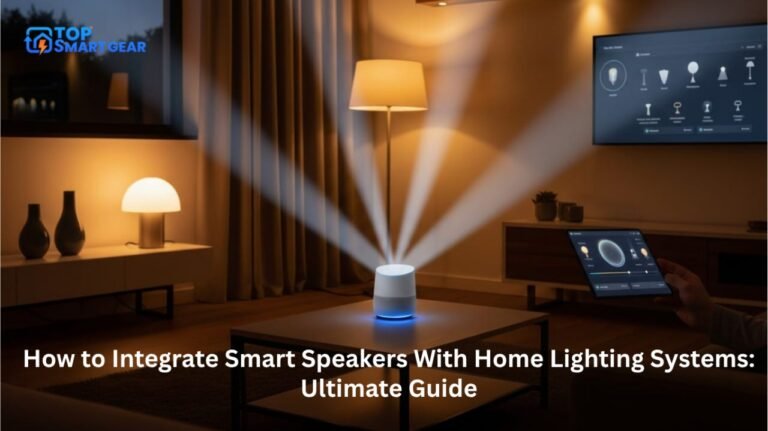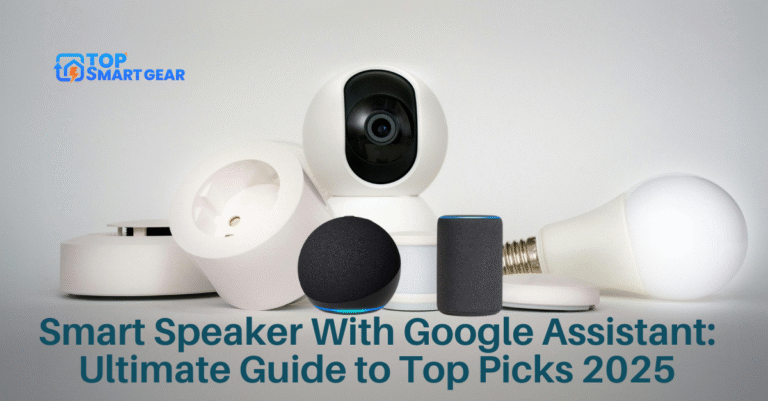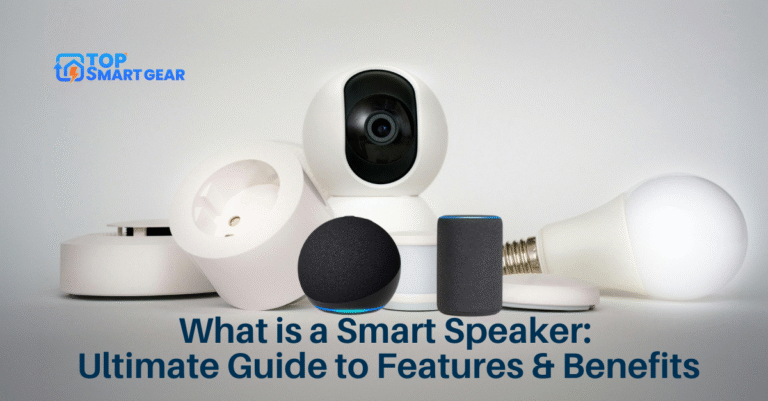Looking to make your home smarter, brighter, and more comfortable? Choosing the Best Smart Light System for Home can completely transform your living space with convenience, energy efficiency, and modern style.
Imagine controlling your lights with just a tap or your voice, setting the perfect mood for any moment, and saving energy without lifting a finger. You’ll discover the top smart lighting options that fit your needs, budget, and style. Keep reading to find out how you can bring convenience, safety, and style to every room in your home.
Top Smart Light Brands
Choosing the right smart light system can brighten your home and simplify your life. The best brands offer reliable products, easy setup, and smart features. This section covers the Best Smart Light System for Home that stand out for quality and performance. Each brand has unique strengths to fit different needs and budgets.
Philips Hue
Philips Hue is one of the most popular smart lighting brands worldwide. It offers a wide range of bulbs, light strips, and fixtures with vibrant colors and adjustable white tones. Philips Hue lights connect through a dedicated hub called the Hue Bridge, which allows control of multiple lights at once.
Key features include:
- Supports voice control via Alexa, Google Assistant, and Apple HomeKit
- Customizable scenes and schedules for different moods and routines
- Integration with many smart home systems and apps
- Strong, reliable Zigbee wireless connection
Philips Hue products come in various shapes and sizes. The following table shows some popular options:
| Product | Type | Color Options | Price Range |
|---|---|---|---|
| Hue White and Color Ambiance Bulb | Bulb | 16 million colors + white tones | $$$ |
| Hue Lightstrip Plus | Light Strip | 16 million colors + white tones | $$$ |
| Hue White Ambiance Bulb | Bulb | White tones only | $$ |
Philips Hue is ideal for users who want a proven system with many features. Its ecosystem continues to grow with new products and updates.
Lifx
LIFX smart lights do not require a hub, making setup simpler. They connect directly to Wi-Fi and offer bright, colorful lighting options. LIFX bulbs are known for high brightness and vibrant colors.
Important features include:
- Direct Wi-Fi connection – no extra hub needed
- Wide color range with deep saturation and brightness
- Works with Alexa, Google Assistant, and Apple HomeKit
- Built-in effects like color loops and music sync
LIFX offers various products suitable for many rooms. Below is a quick look:
| Product | Type | Color Options | Price Range |
|---|---|---|---|
| LIFX Color Bulb | Bulb | 16 million colors + white tones | $$$ |
| LIFX Mini White | Bulb | White tones only | $$ |
| LIFX Beam | Light Bar | Multiple colors per segment | $$$$ |
LIFX is great for users who want an easy setup without extra devices. Its brightness and color quality make it perfect for creative lighting.
Sengled
Sengled offers affordable smart lighting with simple controls. Many Sengled lights use a Zigbee hub for fast, stable connections. Sengled bulbs focus on essential smart features without high costs.
Features include:
- Zigbee or Wi-Fi options available
- Voice control compatible with Alexa and Google Assistant
- Basic color and white lighting options
- Easy setup and budget-friendly prices
Here is a quick comparison of Sengled’s main products:
| Product | Type | Color Options | Price Range |
|---|---|---|---|
| Sengled Smart LED Bulb | Bulb | White tones | $ |
| Sengled Smart Color Bulb | Bulb | 16 million colors | $$ |
| Sengled Smart Light Strip | Light Strip | 16 million colors | $$ |
Sengled suits people who want basic smart lighting at a low price. It fits well in homes that need simple, reliable bulbs.
Nanoleaf
Nanoleaf offers unique smart lighting panels and bulbs that focus on design and creativity. Their products create stunning wall designs with customizable light shapes and colors. Nanoleaf lights can change according to music, time, or user preferences.
Key features include:
- Modular light panels for custom shapes
- Millions of colors and dynamic effects
- Integration with Alexa, Google Assistant, and Apple HomeKit
- Touch and gesture control on panels
Nanoleaf’s main products include:
| Product | Type | Color Options | Price Range |
|---|---|---|---|
| Nanoleaf Shapes | Light Panels | 16 million colors | $$$$ |
| Nanoleaf Canvas | Light Panels | 16 million colors | $$$$ |
| Nanoleaf Essentials Bulb | Bulb | 16 million colors + white tones | $$ |
Nanoleaf works well for users who want to add artistic lighting to their homes. Its panels are perfect for creating eye-catching light displays.
Key Features To Consider
Choosing the Best Smart Light System for Home involves more than just picking a brand or price. Certain key features make a huge difference in your daily experience. These features affect how well your lights work, how easy they are to control, and how much energy they save. Understanding these factors helps you select a system that fits your needs perfectly.
Brightness And Color Options
Brightness is a crucial factor for smart lights. It determines how well a room is lit and the mood it creates. Most smart lights measure brightness in lumens. A higher lumen number means a brighter light. For example, living rooms usually need around 1,500 lumens, while bedrooms may require less.
Color options also matter. Some smart lights offer millions of colors, while others provide basic white tones. Color temperature, measured in Kelvins (K), affects how warm or cool the light looks:
- Warm light (2700K-3000K) creates a cozy atmosphere.
- Neutral light (3500K-4100K) works well for reading or kitchens.
- Cool light (5000K-6500K) feels bright and energizing, good for workspaces.
Here is a quick guide to brightness and color types:
| Feature | Range/Options | Best Use |
|---|---|---|
| Brightness (Lumens) | 300 – 1600+ | Low light to fully bright rooms |
| Color Temperature (Kelvin) | 2700K – 6500K | Warm to cool lighting moods |
| Color Options | White only / Full color RGB | Basic lighting or mood setting |
Choosing the right brightness and color options helps create the perfect ambiance. It also lets you adjust lighting for different activities.
Compatibility With Smart Home Systems
The Best Smart Light System for Home should integrate seamlessly with your existing smart devices. Compatibility allows effortless control through your smartphone, voice assistants, or home automation setups. Most top smart lighting systems connect using Wi-Fi, Bluetooth, or Zigbee, so always check which protocol works best for your setup before buying.
Popular smart home platforms include:
- Amazon Alexa – Voice control with Echo devices.
- Google Assistant – Works with Google Home speakers.
- Apple HomeKit – Integrates with iPhone and Siri.
- Samsung SmartThings – Supports multiple device brands.
Here is a comparison table of common platforms and their features:
| Platform | Voice Control | App Control | Automation Support |
|---|---|---|---|
| Amazon Alexa | Yes | Yes | Yes |
| Google Assistant | Yes | Yes | Yes |
| Apple HomeKit | Yes | Yes | Limited |
| Samsung SmartThings | Yes | Yes | Yes |
Confirm your smart light system supports the platform you use. This prevents compatibility issues and ensures easy control.
Energy Efficiency
Energy efficiency is important for saving money and reducing power use. Smart lights often use LED bulbs, which consume less electricity than traditional bulbs. Check the wattage and lumens to compare energy use.
Smart lighting systems can also help save energy with these features:
- Scheduling: Automatically turn lights on/off at set times.
- Motion sensors: Lights activate only when needed.
- Dimming: Use less power by reducing brightness.
- Remote control: Turn off lights from anywhere to avoid waste.
Look for Energy Star-certified products. They meet strict energy-saving standards.
Here is a quick comparison of energy use between bulb types:
| Bulb Type | Wattage | Lumens | Energy Use |
|---|---|---|---|
| Incandescent | 60W | 800 | High |
| Compact Fluorescent (CFL) | 14W | 800 | Moderate |
| LED | 8-10W | 800 | Low |
Ease Of Installation
Easy installation saves time and frustration. Most smart light systems offer simple setup processes. Some bulbs work like regular bulbs and fit in existing sockets. Others may require a hub or bridge for control.
Consider these points for installation:
- Type of bulbs: Check if the bulbs fit your current fixtures.
- Hub requirements: Some systems need a central hub, others connect directly via Wi-Fi.
- App setup: A clear app with step-by-step instructions helps.
- Voice assistant integration: Easy linking with Alexa, Google Assistant, or Siri.
- Support and tutorials: Look for good customer support and online guides.
Here is a simple checklist for installation:
- Check bulb type and size compatibility
- Confirm hub or bridge needs
- Download and install the app
- Follow step-by-step setup instructions
- Test voice control if available
Choosing a system with simple installation helps you start using smart lights quickly and without hassle.
Types Of Smart Lights
Smart lights bring convenience, efficiency, and style to every home. With a smart home lighting system, you can easily control brightness, colors, and schedules through your mobile app or voice-controlled smart lights. Different types of WiFi smart lighting solutions are designed for various rooms and purposes, and understanding these options helps you choose the smart LED lighting for your home that perfectly matches your lifestyle and enhances everyday living.

Bulbs
Smart bulbs are the most common and easiest way to start smart lighting. They fit into standard light sockets and replace regular bulbs. Users control them via apps or voice commands.
Advantages of smart bulbs:
- Simple installation—just screw into a socket
- Adjustable brightness and color options
- Works with many smart home systems
- Energy-efficient LED technology
Smart bulbs come in different types:
| Type | Features | Best Use |
|---|---|---|
| White | Adjustable brightness, warm to cool tones | Everyday rooms |
| Color | Millions of colors, scenes, and effects | Living rooms, bedrooms |
| Filament | Vintage look with smart controls | Decorative lighting |
Smart bulbs fit well in lamps, ceiling lights, and wall sconces. They offer flexibility without changing fixtures.
Light Strips
Smart light strips are flexible strips with many small LEDs. They stick to surfaces and provide colorful or white light. These strips add ambiance and highlight spaces creatively.
Popular uses of light strips:
- Under cabinets in kitchens
- Behind TVs or monitors
- Along stairs or shelves
- Accent walls or ceilings
Key features of smart light strips include:
- Cuttable lengths to fit different spaces
- Multiple colors and brightness levels
- Sync with music or movies for effects
- Easy app or voice control
Light strips need a power source and may come with adhesive backs. They create modern, fun lighting setups and improve room moods.
Panels
Smart light panels are flat, square or triangular tiles that attach to walls. They offer unique designs and customizable light patterns. Panels suit tech-savvy users who want stylish lighting art.
Advantages of smart panels include:
- Modular design for custom shapes
- Touch control and app customization
- Color-changing and animated effects
- Can act as mood lights or wall décor
Panels usually connect via Wi-Fi or Bluetooth. They require mounting on walls with included hardware. Common panel types:
- Triangular panels for geometric designs
- Square or hexagonal panels for flexible layouts
These lights make rooms visually striking and allow personal creative expression.
Fixtures
Smart fixtures combine lighting and design elements in one unit. They include smart chandeliers, ceiling lights, and wall lamps. Fixtures replace existing lights and offer integrated smart control.
Benefits of smart fixtures:
- Built-in LEDs with smart features
- Stylish designs for different rooms
- Remote and voice control options
- Energy-saving and long-lasting
Types of smart fixtures:
| Fixture Type | Common Features | Ideal Room |
|---|---|---|
| Ceiling Lights | Bright, adjustable light for general use | Living rooms, kitchens |
| Chandeliers | Decorative, multi-arm designs with smart bulbs | Dining rooms, entryways |
| Wall Lamps | Accent lighting with dimming options | Bedrooms, hallways |
Smart fixtures offer a clean look with fewer devices. They fit well in homes wanting a seamless smart lighting upgrade.
Control Methods
A smart lighting system provides flexible and convenient control options to suit your lifestyle. These methods make it easy to switch lights on or off, adjust brightness, or change colors. From mobile apps and voice-controlled smart lights to smart switches and lighting automation routines, modern WiFi smart lighting solutions offer multiple ways to manage your home lighting. Understanding these control options will help you select the smart LED lighting for home that perfectly fits your daily routine and enhances convenience.
Voice Assistants
The Best Smart Light System for Home provides hands-free control through voice assistants. Simply speak commands to turn lights on or off, adjust brightness, or change colors. Popular assistants like Amazon Alexa, Google Assistant, and Apple Siri make it easy to manage your lighting via smart speakers or smartphones with voice recognition.
Benefits of voice control:
- Convenience: Control lights without moving or using your hands.
- Speed: Quick responses to simple commands.
- Accessibility: Great for people with mobility challenges.
Voice assistants can also create routines. For example, say “Good night” to turn off all lights. They connect with other smart home devices, making automation easy.
| Voice Assistant | Devices Supported | Popular Commands |
|---|---|---|
| Amazon Alexa | Echo, Fire TV, Smartphones | “Turn on the living room light” |
| Google Assistant | Google Nest, Android Phones | “Dim the bedroom lights to 50%” |
| Apple Siri | iPhone, iPad, HomePod | “Set the lights to blue.” |
Mobile Apps
Mobile apps provide full control over smart lights from anywhere. You can turn lights on or off, change colors, set schedules, and create scenes. Each smart light brand offers its own app with unique features. Most apps support both Android and iOS devices.
Advantages of app control:
- Remote access: Manage lights even when you’re away from home.
- Customization: Create specific lighting moods and timers.
- Integration: Connect with other smart devices and services.
Apps often include visual interfaces like sliders and color wheels. This makes adjusting light brightness and color easy and fun. Some apps also show energy usage and device status.
Example features in popular apps:
- Scheduling: Set lights to turn on or off at specific times.
- Grouping: Control multiple lights in a single room.
- Scenes: Save favorite light settings for quick use.
Physical Switches
The Smart Light System often includes physical switches for simple, reliable control. These switches can replace traditional wall switches or work alongside them, providing an easy way to operate your lights without needing apps or voice commands..
Types of physical switches:
- Smart wall switches: Installed on the wall to control one or more lights.
- Remote controls: Portable devices that control lights from a distance.
- Dimmer switches: Allow adjusting light brightness manually.
Benefits of physical switches include:
- Familiarity: Works like regular switches, no learning curve.
- Reliability: Doesn’t depend on the internet or apps.
- Backup option: Use when voice or app control is unavailable.
Some smart light systems support multi-way switching. This means you can control one light from multiple switches in a room. It adds flexibility and convenience for larger spaces.
Setup And Integration Tips
Setting up a smart home lighting system may seem daunting at first, but with the right approach, it’s straightforward and rewarding. Proper installation and integration ensure your WiFi smart lighting solutions work seamlessly with other devices in your home. By following simple steps to connect, sync, and automate your lights, you can enjoy maximum convenience and efficiency. These tips help you get the most out of your smart LED lighting for home, making your smart lighting experience smooth, intuitive, and enjoyable.
Connecting To Wi-fi
Smart lights need a stable Wi-Fi connection to work well. Follow these steps to connect your lights to your home network:
- Check your Wi-Fi signal: Place lights near your router during setup to get a strong signal.
- Use the right network: Connect to a 2.4 GHz Wi-Fi band, as many smart lights do not support 5 GHz.
- Enter correct password: Double-check your Wi-Fi password for accuracy.
- Use the official app: Most smart lights come with an app to help with setup.
Some routers block new devices by default. Ensure your router allows new device connections. If your light fails to connect, restart your router and try again.
| Step | Action | Tip |
|---|---|---|
| 1 | Turn on the smart light | Make sure the light is blinking or in pairing mode |
| 2 | Open the smart light app | Follow on-screen instructions to add a new device |
| 3 | Select Wi-Fi network | Choose your 2.4 GHz network from the list |
| 4 | Enter Wi-Fi password | Type carefully to avoid errors |
| 5 | Wait for connection confirmation | It may take up to a minute |
Syncing With Other Devices
Smart lights work best when they sync with other smart home gadgets. This creates a connected environment. Use these tips to sync your lights:
- Choose compatible devices: Check if your smart light supports popular platforms like Alexa, Google Home, or Apple HomeKit.
- Enable skill or integration: Activate the smart light skill in your voice assistant app.
- Use the same Wi-Fi network: Keep all devices on one network for smooth syncing.
- Rename devices: Give your lights easy names for voice commands.
Once synced, you can control your lights using voice commands or through other apps. For example, say “Turn off living room lights” or set your thermostat and lights to adjust together.
| Device | Integration Method | Benefits |
|---|---|---|
| Amazon Alexa | Link the account in Google Home app | Voice control and routines |
| Google Home | Add a device in Home app | Hands-free operation and automation |
| Apple HomeKit | Add a device in the Home app | Secure control and scenes |
Creating Scenes And Schedules
Scenes and schedules give your smart lights personality and save energy. Scenes adjust multiple lights together. Schedules turn lights on or off automatically. Follow these tips:
- Use the app’s scene builder: Pick colors and brightness for each light.
- Name your scenes clearly: Use names like “Movie Time” or “Dinner” for easy selection.
- Set schedules: Choose times for lights to turn on/off or change scenes.
- Combine with other devices: Link scenes to triggers like motion sensors or sunset time.
Example schedules:
- Turn on porch lights at sunset.
- Dim bedroom lights at 10 PM.
- Brighten kitchen lights at 7 AM.
Automating scenes and schedules makes your home feel smart and saves energy.
Budget-friendly Options
Choosing the Best Smart Light System for the Home does not mean spending a lot of money. Many budget-friendly options offer great features and easy control. These options help to brighten your home smartly without a big cost. Smart lighting can improve comfort, save energy, and add style, even on a tight budget. Focus on affordable bulbs and starter kits to begin your smart lighting journey.
Affordable Bulbs
Smart bulbs are the simplest way to add smart lighting at a low cost. They fit into regular light sockets and connect to your phone or voice assistant. Many brands offer bulbs under $20 that still deliver color control, dimming, and scheduling.
Benefits of affordable smart bulbs:
- Easy installation without extra hardware
- Control brightness and color from your phone
- Energy-efficient LED technology
- Works with Alexa, Google Assistant, or Apple HomeKit
Here is a quick comparison of popular budget smart bulbs:
| Brand | Price | Features | Compatibility |
|---|---|---|---|
| Wyze Bulb | $8 | White & Color, Dimmable, Scheduling | Alexa, Google |
| TP-Link Kasa | $12 | White & Color, Dimmable, Energy Monitoring | Alexa, Google, HomeKit |
| Merkury Smart | $10 | White, Dimmable, Scheduling | Alexa, Google |
These bulbs are perfect for testing smart lighting without a high investment. Start with one or two bulbs in key rooms. Add more bulbs over time to expand your smart home lighting.
Starter Kits
Starter kits provide everything needed for a smart lighting setup at a low price. Kits usually include bulbs, a hub or bridge, and a remote or app control. This bundle saves money compared to buying items separately.
Advantages of smart light starter kits:
- Simple setup with included hub
- Multiple bulbs are synchronized together
- Remote control and automation options
- Expandable with more bulbs or accessories
Here are some popular budget starter kits and what they offer:
| Kit | Price | Contents | Features |
|---|---|---|---|
| Philips Hue White Starter Kit | $50 | 3 White Bulbs + Hub | Dimming, App Control, Voice Support |
| TP-Link Kasa Smart Light Kit | $40 | 2 Color Bulbs + Hub | Color Control, Scheduling, Voice |
| Wyze Smart Light Starter | $35 | 3 White Bulbs, No Hub Needed | App Control, Scheduling, Alexa |
Starter kits offer a quick way to get a full smart lighting system. Kits with hubs provide better reliability and more features. Choose one that matches your budget and room size.
Advanced Features
The best smart home lighting system offers much more than just remote light control. Modern WiFi smart lighting solutions make your home lighting experience interactive, energy-efficient, and highly personalized. With features like color customization, motion sensing, voice-controlled smart lights, and full lighting automation, these systems enhance both comfort and ambiance. Exploring these advanced options will help you choose the smart LED lighting for your home that perfectly fits your lifestyle, mood, and daily routine.
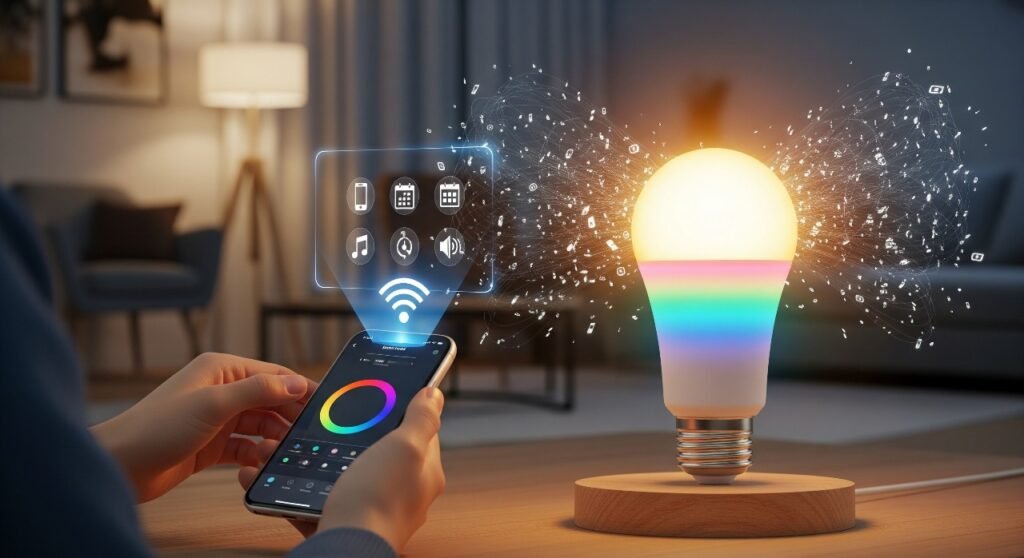
Color Changing And Effects
The Smart Light System offers the exciting ability to change colors and create dynamic lighting effects. Smart bulbs can display millions of colors, allowing you to set the perfect mood for any room. You can choose from preset colors or design your own custom shades for a personalized experience.
- Adjust brightness: Dim or brighten lights to match the time of day or activity.
- Color presets: Select themes like warm white, cool blue, or vibrant red.
- Dynamic effects: Use fading, flashing, or color cycling.
These features work well for different occasions:
| Occasion | Recommended Colors/Effects |
|---|---|
| Relaxation | Soft blues, warm whites, slow fading |
| Party | Bright colors, flashing lights, color cycling |
| Reading | Bright white, adjustable brightness |
Color-changing adds a fun and practical layer to home lighting. It creates a personalized space easily.
Music And Entertainment Sync
The best smart lighting system elevates your entertainment experience by syncing seamlessly with music and multimedia devices. These WiFi smart lighting solutions respond to sound in real time, changing colors, pulsing, or flashing to match the rhythm of your favorite songs or movie soundtracks. This interactive smart lighting feature turns any home entertainment setup into a dynamic and immersive experience.
Imagine watching an action movie with lights that flash during explosions or enjoying music with colors that match the rhythm — creating a truly immersive atmosphere.
- Sound-responsive lighting: Lights adjust automatically based on volume and tempo.
- App control: Use dedicated smartphone apps to customize your lighting sync settings.
- Multiple device support: The Smart Light System for Home works seamlessly with speakers, TVs, and gaming consoles for a complete entertainment experience.
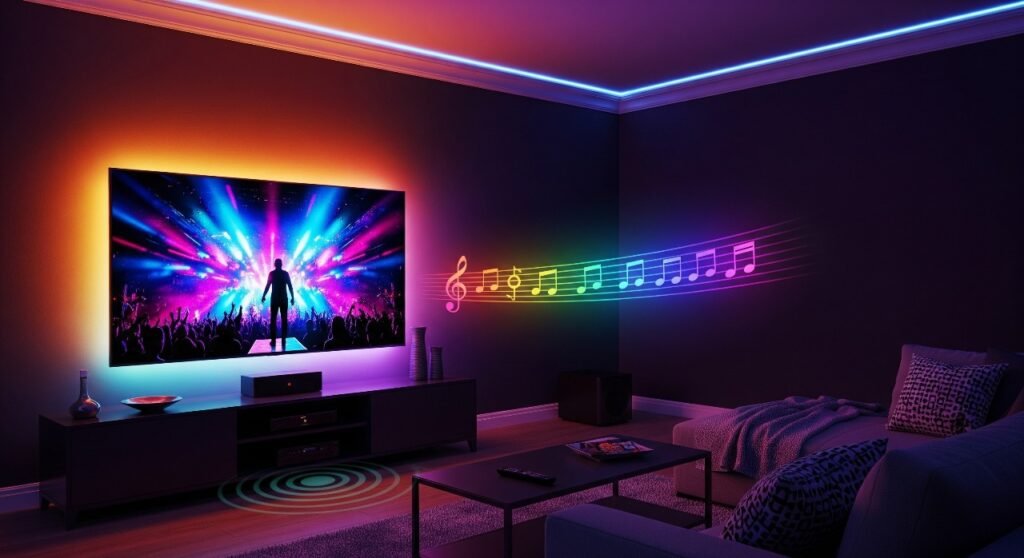
Benefits include:
- Enhances mood and excitement during events
- Transforms regular rooms into entertainment zones
- Easy to set up with compatible devices
Music and entertainment sync turns lighting into part of the fun. It adds a new layer to home gatherings and solo enjoyment.
Geofencing And Automation
The best smart home lighting system transforms everyday lighting into an intelligent experience with automation and geofencing features. Using your phone’s location, these WiFi smart lighting solutions automatically turn lights on when you arrive and off when you leave—enhancing convenience while saving energy. This seamless integration of smart lighting automation brings both comfort and efficiency to your modern home.
Automation lets you set schedules and create custom lighting rules. Lights can adjust based on time, sunrise, or sunset, and you can design personalized scenes that activate multiple lights with a single command.
- Geofencing: The Smart Light System for Home responds to your location automatically, requiring no manual input.
- Scheduling: Set daily or weekly lighting routines for consistent comfort.
- Scene creation: Group multiple lights to create moods or activity-based scenes.
- Voice control: Easily integrate with Alexa, Google Assistant, or other smart home systems for hands-free operation.
| Automation Type | Description | Benefit |
|---|---|---|
| Arrival Lighting | Lights turn on when you enter the geofence area. | Welcomes you home safely and comfortably. |
| Night Mode | Dimmed lights turn on at bedtime. | Prepares the house for sleep and reduces energy use. |
| Wake-Up Scene | Gradual brightness increase in the morning. | Helps wake you gently and naturally. |
Geofencing and automation make daily life easier. They help reduce wasted energy and increase comfort effortlessly.
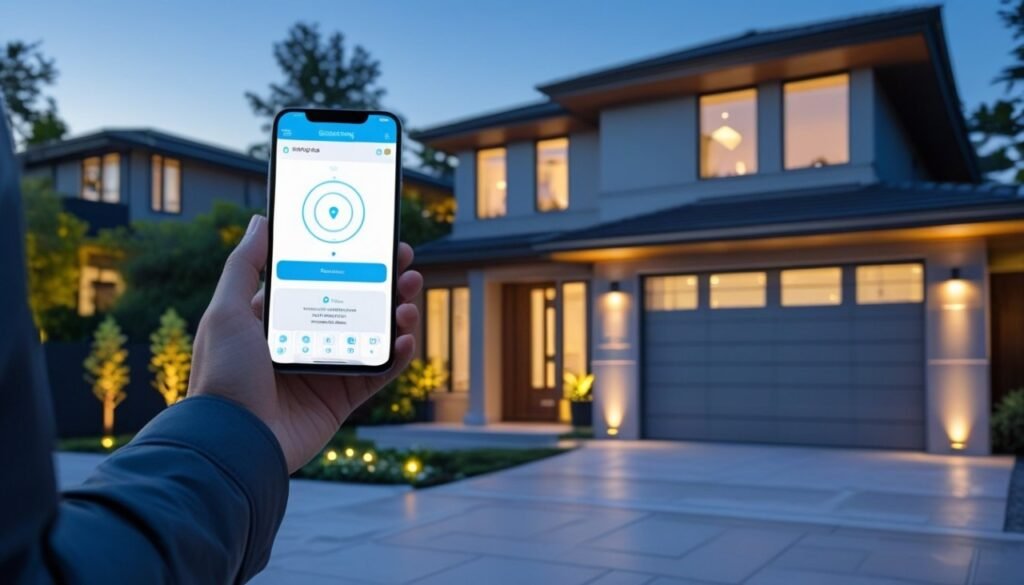
Troubleshooting Common Issues
Smart lighting systems make home lighting easier and more convenient. Yet, users can face some common problems. Troubleshooting these issues quickly helps keep your smart lights working well. This guide covers simple fixes for the most frequent troubles with smart light systems.
Connectivity Problems
Smart lights often depend on a strong Wi-Fi or Bluetooth connection. If your lights fail to respond, connection issues might be the cause. Check the following to resolve connectivity problems:
- Ensure your Wi-Fi is working: Test other devices on the same network.
- Place smart bulbs closer to the router: Distance can degrade signal strength.
- Restart your router and smart lights: Power cycling resets connections.
- Check for network interference: Other electronics can disrupt signals.
- Verify your smart light’s compatibility: Some bulbs only support 2.4 GHz networks.
Use this table to check common connection issues and solutions:
| Issue | Cause | Fix |
|---|---|---|
| Light won’t connect to Wi-Fi | Move the router closer; use 2.4 GHz band | Smart bulb offline in the app |
| Intermittent light response | Network interference | Remove other devices causing interference |
| Check power; reset the bulb and reconnect | Power outage or bulb reset | Check power; reset bulb and reconnect |
Maintaining a stable network connection is key to the performance of smart lights.
App Malfunctions
The app controls your smart lights. Sometimes, the app may freeze, crash, or fail to sync with your lights. These issues can stop you from adjusting brightness, colors, or schedules. Try these steps to fix app problems:
- Update the app: Check the app store for the latest version.
- Force close and reopen the app: Clears temporary glitches.
- Restart your smartphone: Resets system processes.
- Clear app cache (Android): Frees up storage and improves performance.
- Reinstall the app: Removes corrupted files.
- Check app permissions: Ensure it has access to location and network.
Here is a checklist for app troubleshooting:
- Is your app up to date?
- Have you restarted the app or phone?
- Is your phone’s operating system compatible?
- Are app permissions appropriately enabled?
- Have you tried reinstalling the app?
A correctly functioning app is crucial for smooth smart light control.
Firmware Updates
Firmware controls smart light hardware functions. Keeping firmware updated fixes bugs and adds features. Outdated firmware can cause lights to lag, disconnect, or act strangely.
Follow these tips for firmware updates:
- Check for updates regularly: Use the app to find new firmware versions.
- Ensure stable internet during update: Interruptions can damage firmware.
- Do not turn off lights or phone during update: This may cause failure.
- Read update notes: Know what changes or fixes the update includes.
- Backup settings if possible: Prevent loss of custom scenes or schedules.
Use this simple table to track firmware update steps:
| Step | Action | Tip |
|---|---|---|
| 1 | Open smart light app | Connect to your smart lights |
| 2 | Navigate to firmware update section | Usually under device settings |
| 3 | Start update | Use Wi-Fi, avoid mobile data |
| 4 | Wait until update finishes | Do not interrupt power or connection |
| 5 | Restart lights if needed | Check if issues are resolved |
Keeping firmware current ensures your smart lights perform at their best.
Frequently Asked Questions
What Is The Best Smart Light System For Home Use?
The best smart light system offers easy installation, voice control, and energy efficiency. Popular options include Philips Hue and LIFX. Choose one compatible with your smart home devices for seamless integration and customizable lighting.
How Do Smart Light Systems Save Energy At Home?
Smart light systems save energy by allowing scheduled and remote control of lights. They use LED bulbs, which consume less power. Dimming features and motion sensors also reduce unnecessary energy use, effectively lowering electricity bills.
Can Smart Light Systems Work With Voice Assistants?
Yes, most smart light systems are compatible with voice assistants like Alexa, Google Assistant, and Siri. This allows hands-free control, easy customization, and enhanced convenience through simple voice commands in your home.
Are Smart Light Systems Easy To Install And Set Up?
Yes, smart light systems are designed for easy installation with step-by-step apps. Most require no wiring changes and can be set up within minutes, making them accessible for all homeowners without technical expertise.
Conclusion
Choosing the Best Smart Light System for Home makes your living space brighter, smarter, and more efficient. With easy control through mobile apps or voice assistants, you can adjust brightness, set schedules, and save energy effortlessly. Different systems offer unique features to match various needs and budgets, so consider what matters most for your home.
The Smart Light System brings comfort, style, and convenience to your daily life. Start small and expand your setup as you go. Enjoy a modern, energy-efficient home that feels both smart and cozy.


